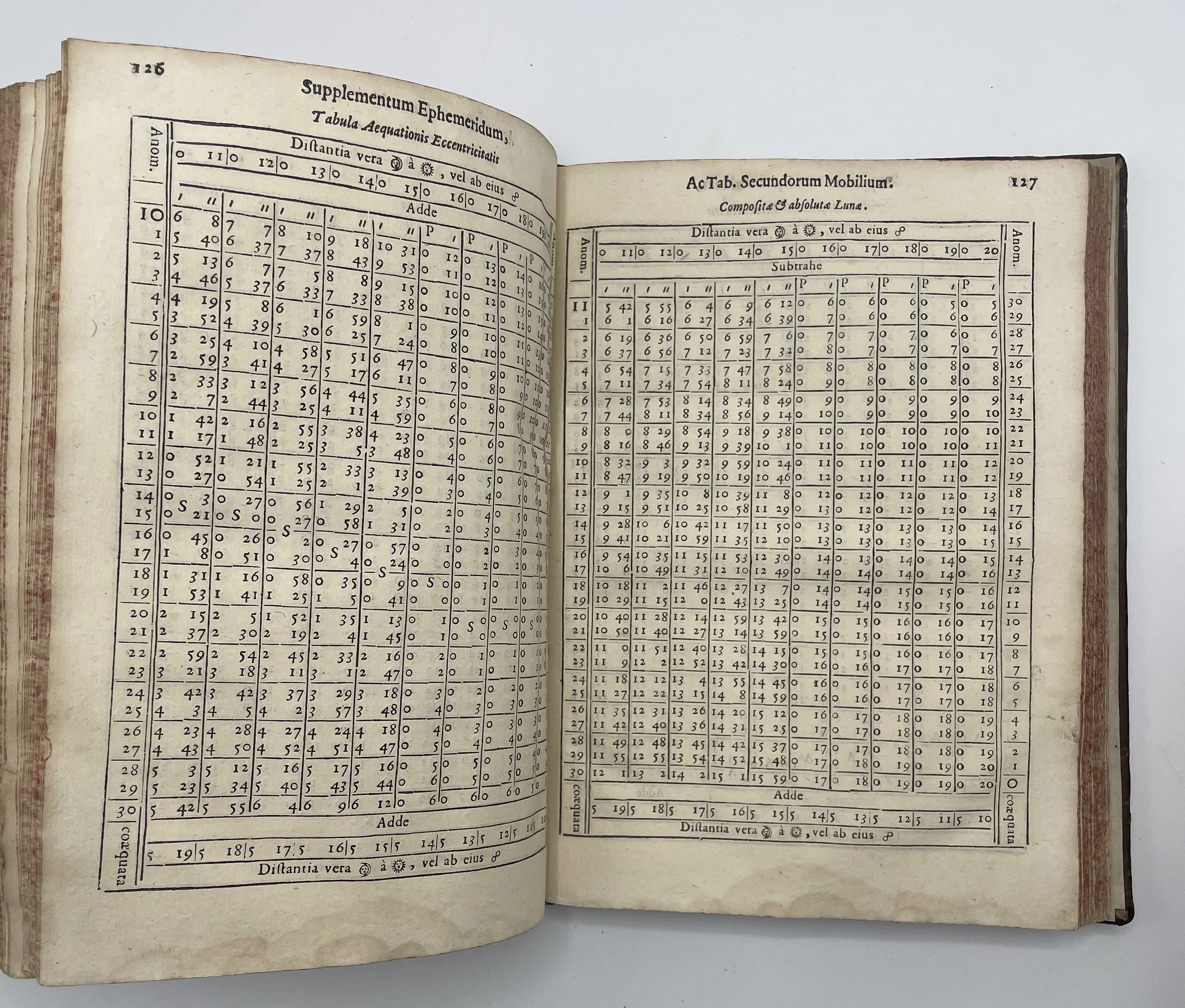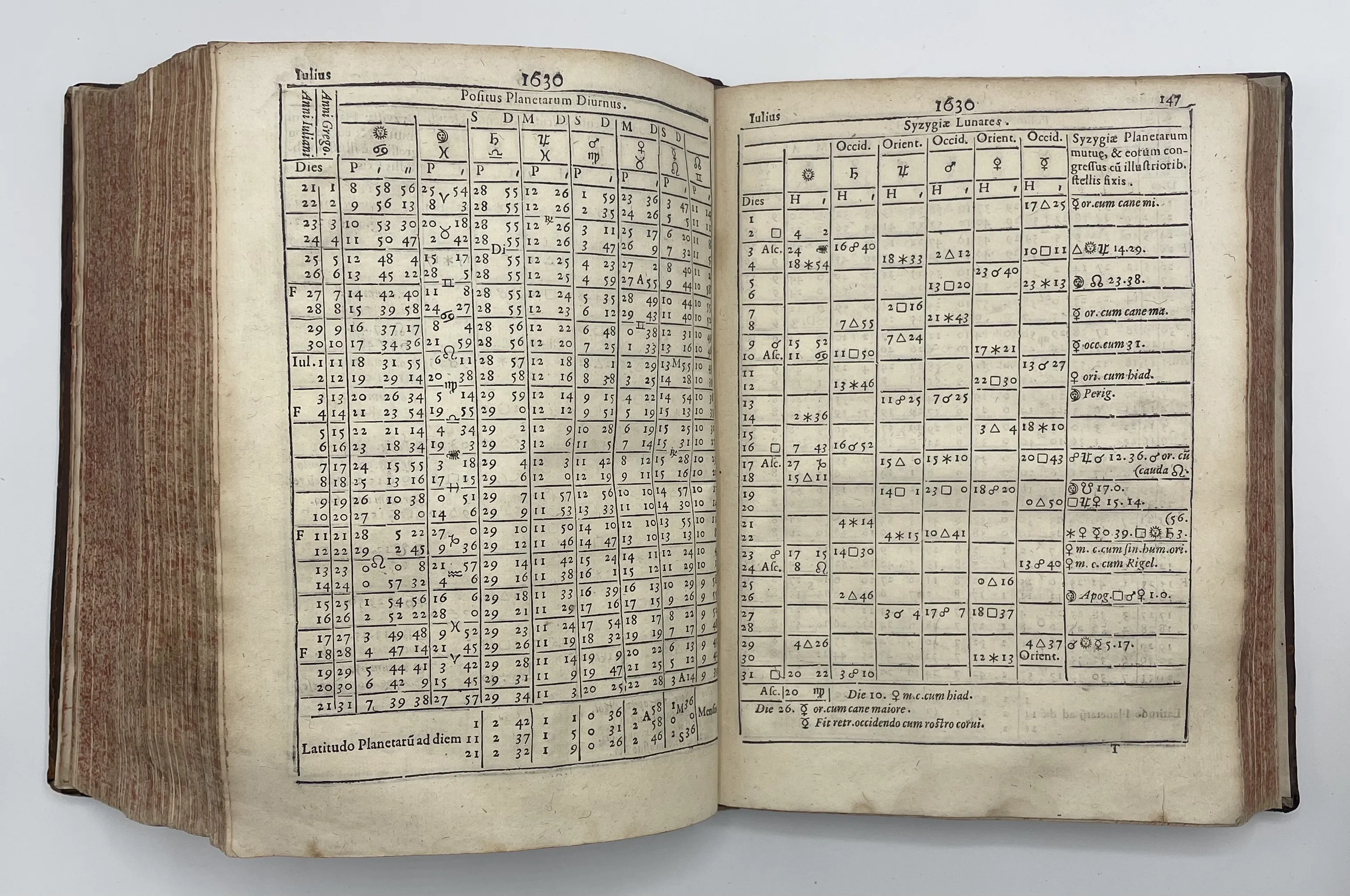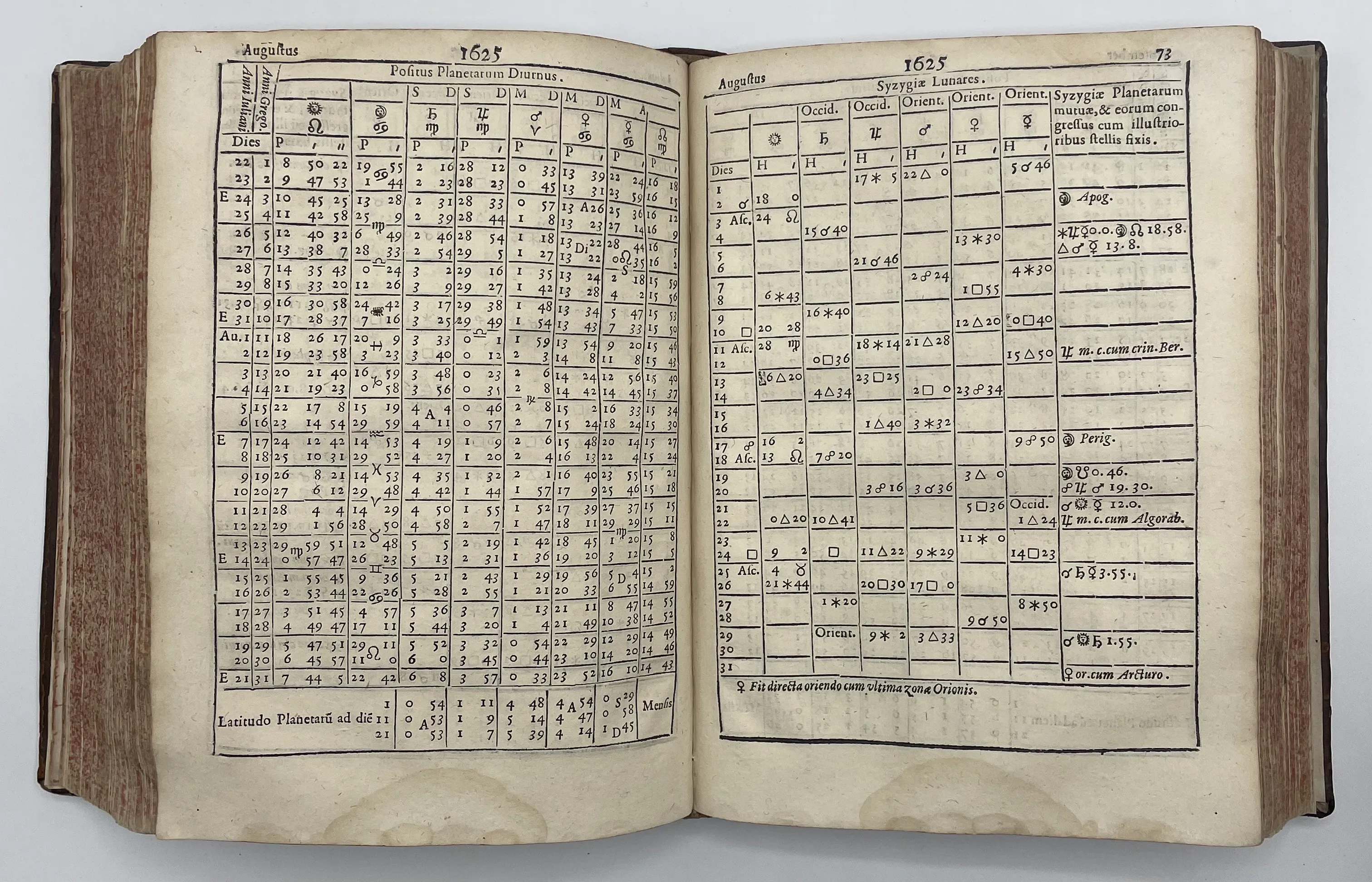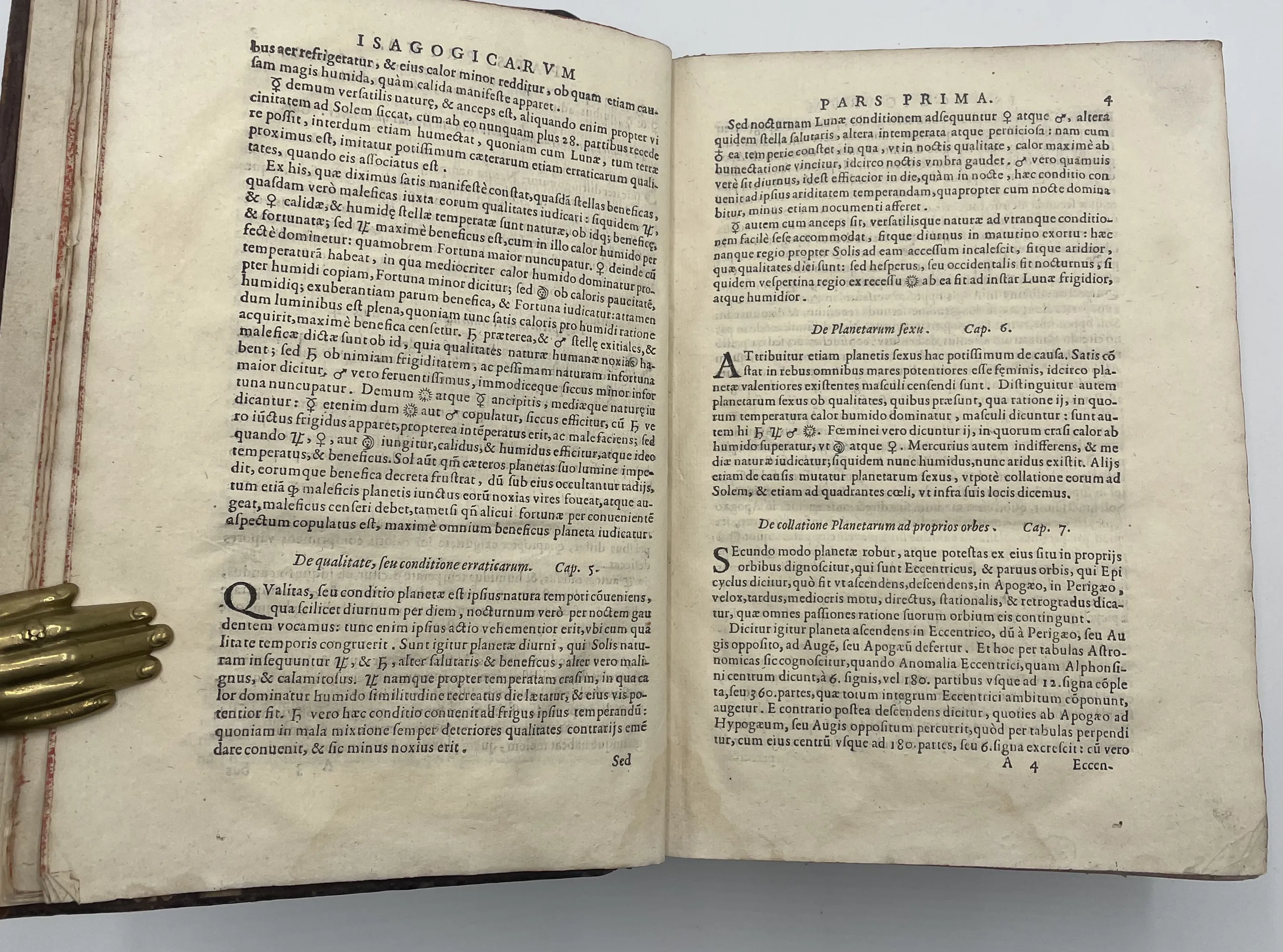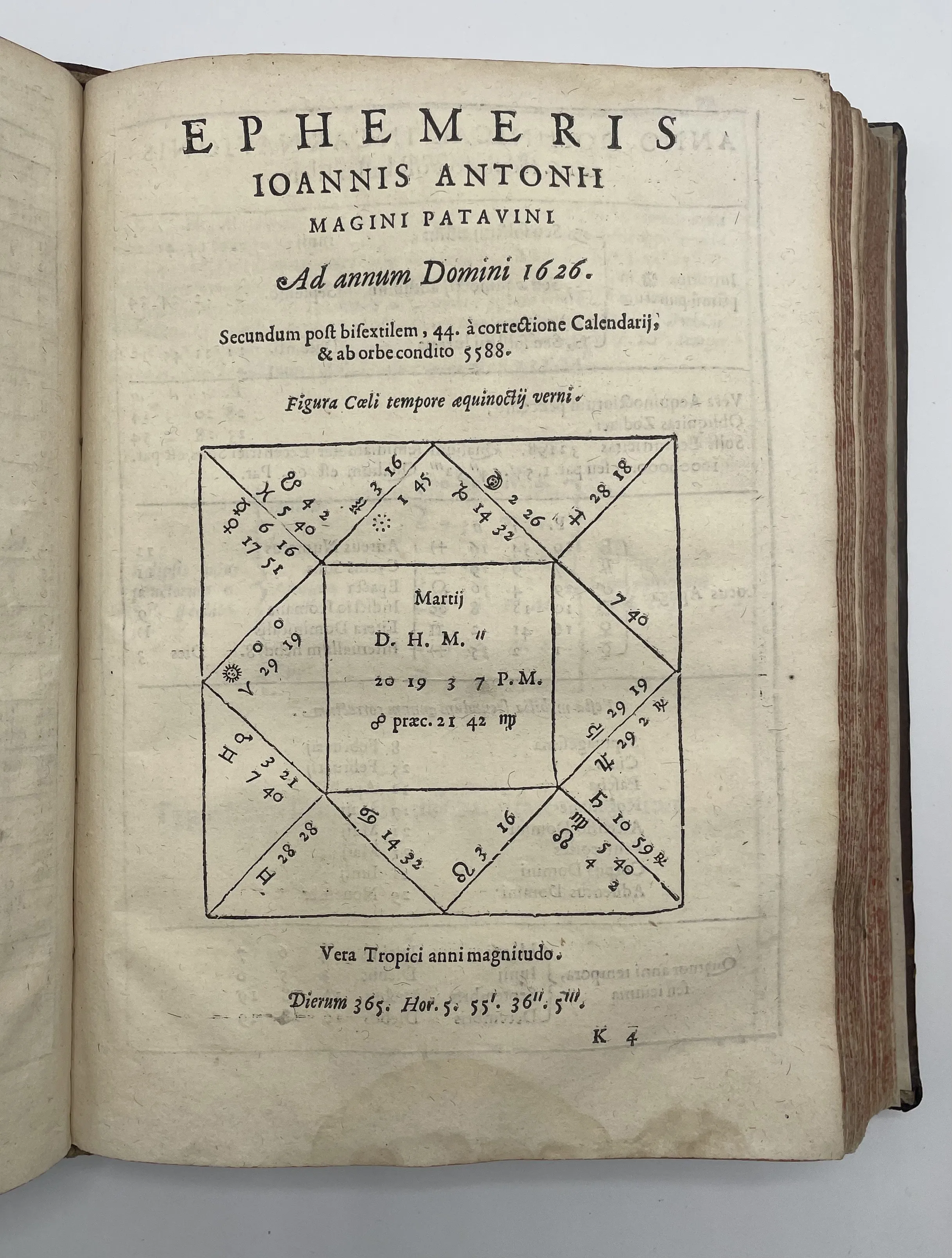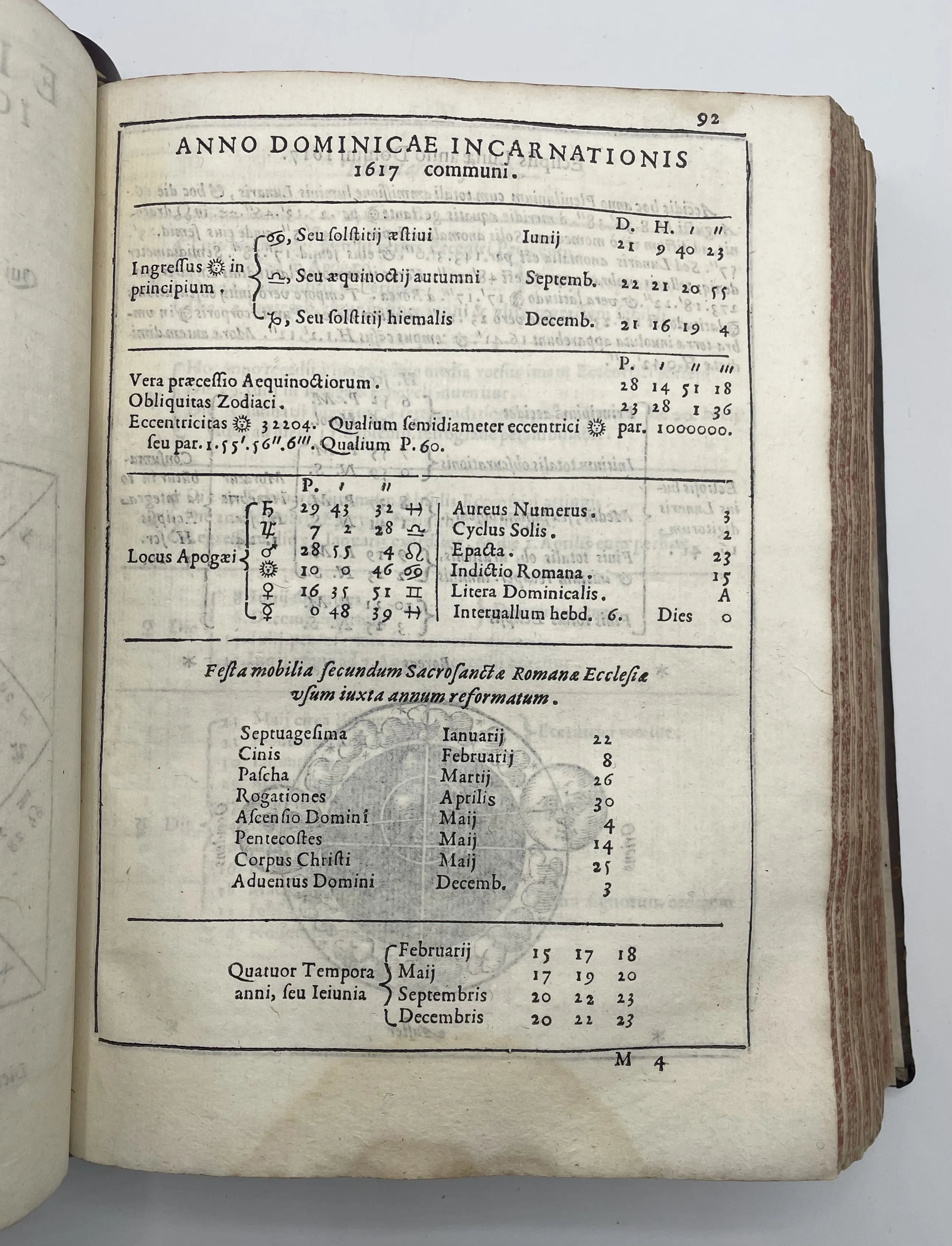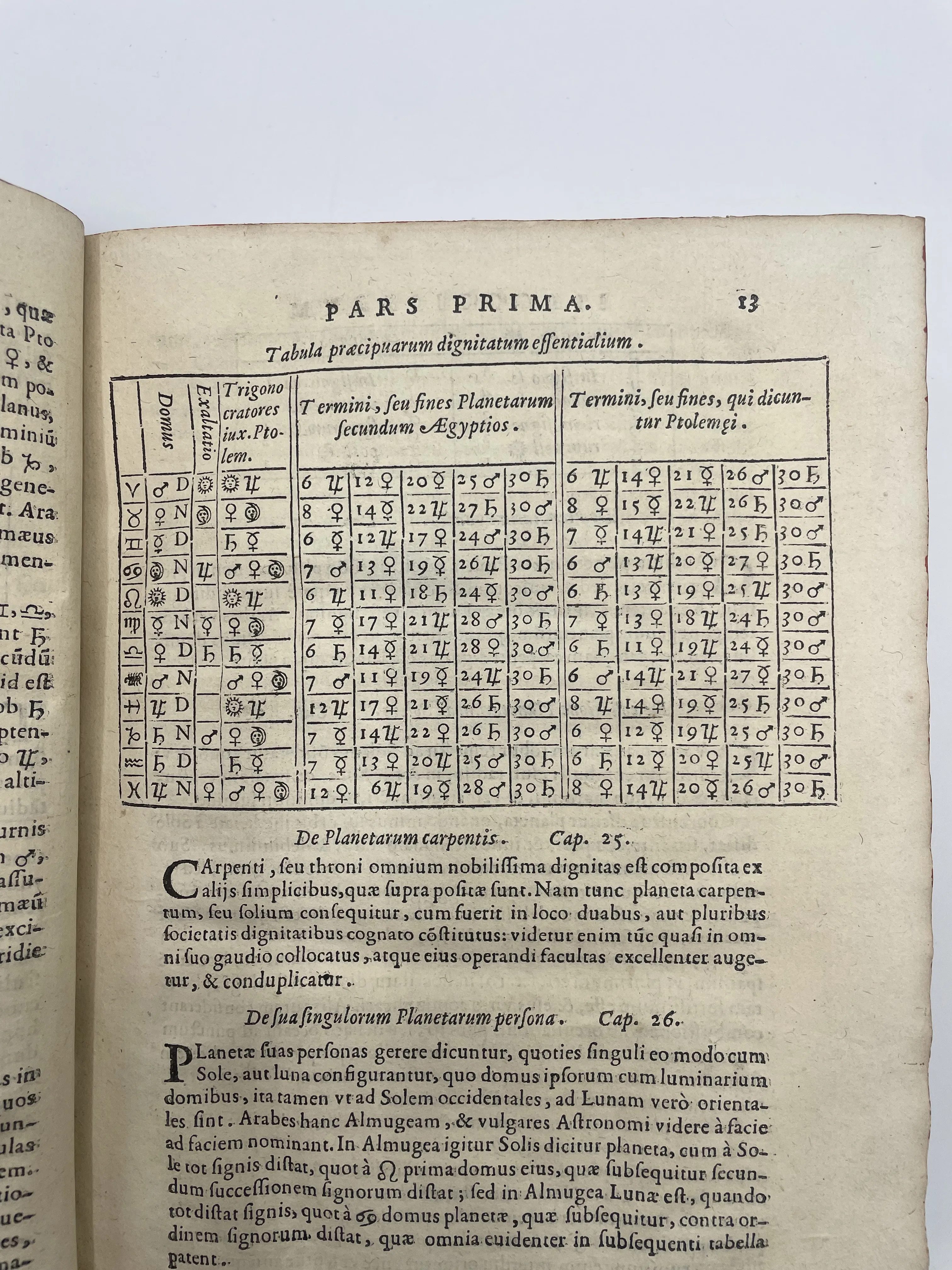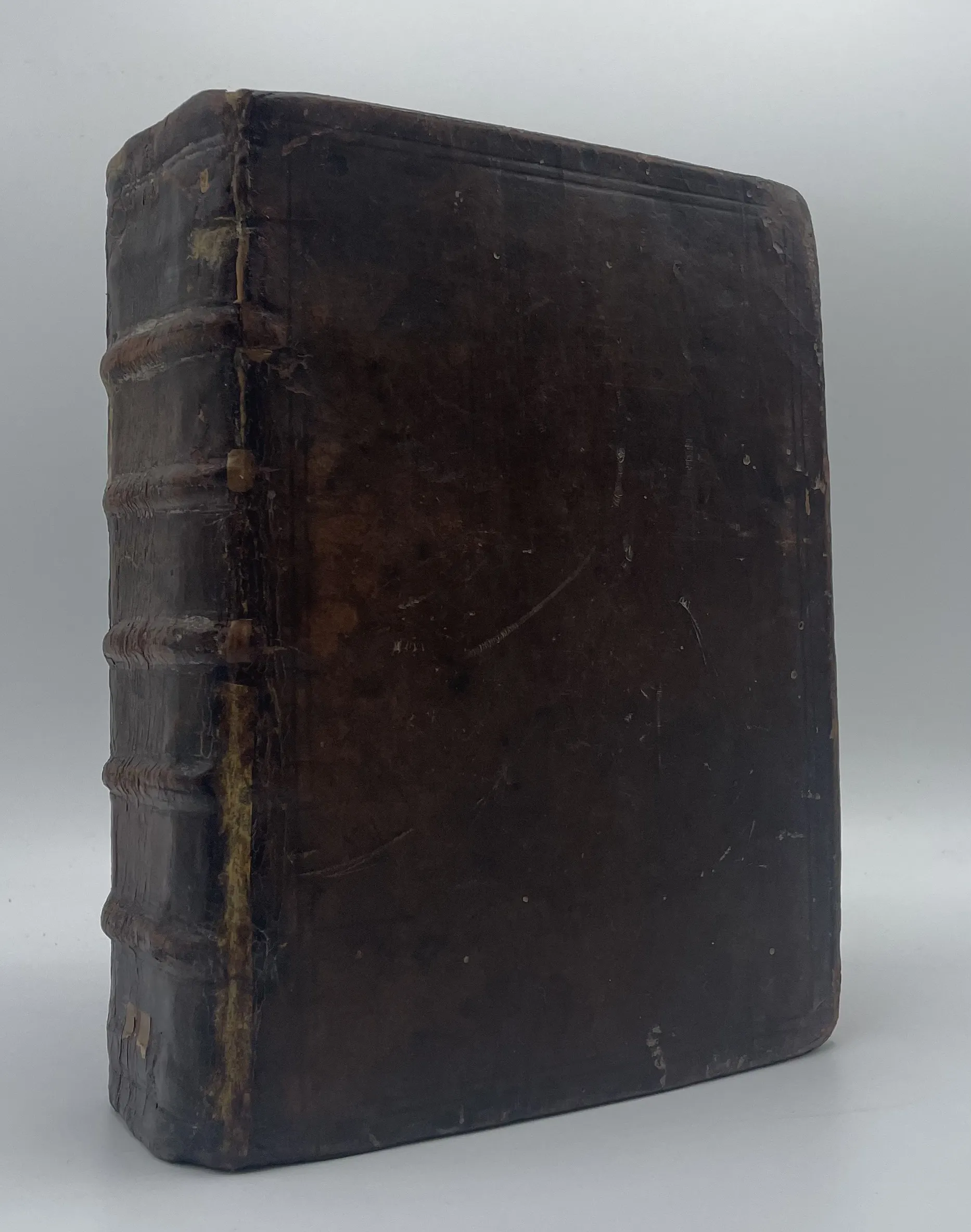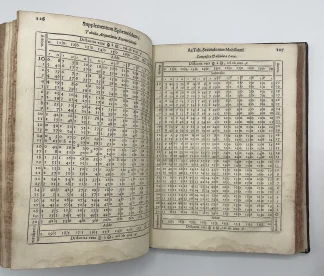MAGINI, Giovanni Antonio.
Ephemerides Coelestium Motuum. [with] Supplementum ephemeridum.
Venice, apud haeredem Damiani Zenarii, 1616 1614£3,250.00
FIRST EDITION of second. Small 4to. 2 works in 1, separate t-ps, ff. (vi) 131 (i), 28, 149 (i), 152; (viii) 311. Roman letter, with Italic. Woodcut printer’s device to t-ps and verso of last, numerical tables and astronomical diagrams, 18 woodcuts with phases of Sun and Moon, woodcut initials and ornaments. T-p and verso of last a little dusty, a couple of ink splashes, minor repair to lower blank margin of first t-p and following four ll., worm trails to lower and occasionally outer blank margin of several gatherings of first work and light water stain to lower margin. Good copies in polished English calf, later eps, double blind ruled, edges gilt, raised bands, extremities and spine a little rubbed, early annotations to the errata and a few ll. of second.
Uncommon important ephemerides. Giovanni Antonio Magini (1555-1617) was an Italian mathematician, astronomer and cartographer. A supporter of the geocentric system, in 1588 he was preferred to Galileo Galilei as professor of mathematics at Bologna. His copious production includes works on quadrants, commentaries on Ptolemy, Regiomontanus and Viètes, and an atlas of Italy. In the 1580s, he began to publish ‘Ephemerides’—numerical tables providing the trajectories and positions of celestial bodies at regular intervals, over the course of several years. He kept updating his calculations and they were reprinted seven times. The first, spanning the years 1611-30, was first published in 1612. The tables were created from the ‘Tabulae Prutenicae’ first published by the astronomer Erasmus Reinhold in 1551, calculated from the position of Venice. This edition also includes a critique of J. Stadius’s calculations, an introduction to judicial astrology, and treatises on the use of ephemerides, annual planetary movements, and fixed stars. The ‘Supplementum’, here in its first edition, includes new tables based on Tycho Brahe’s observations, including eclipses, and revised calculations of the previous ‘Ephemerides’. For these, Magini relied on Kepler’s ‘Tabulae Rudolphinae’, making the ‘Supplementum’ ‘the first ephemerides calculated according to Kepler’s principles’ (Cantamessa 4747). A short epistolary exchange between him and Magini was also included in this work, and printed for the first time. He also followed a few Copernican theories using ‘the exentricities and different epicycles which Copernicus had substituted to those of Ptolemy’ (Delambre, ‘Histoire’, 508).
I: Only Oklahoma and Huntington copies recorded in the US.Riccardi, Bib. matematica, I, 68; Houzeau-Lancaster 14859; Cantamessa 4748.II: Four copies recorded in the US.Riccardi, Bib. matematica, I, 70; Houzeau-Lancaster 15036; Cantamessa 4747. J. Delambre, Histoire de l’astronomie du moyen âge (Paris, 1819).In stock


